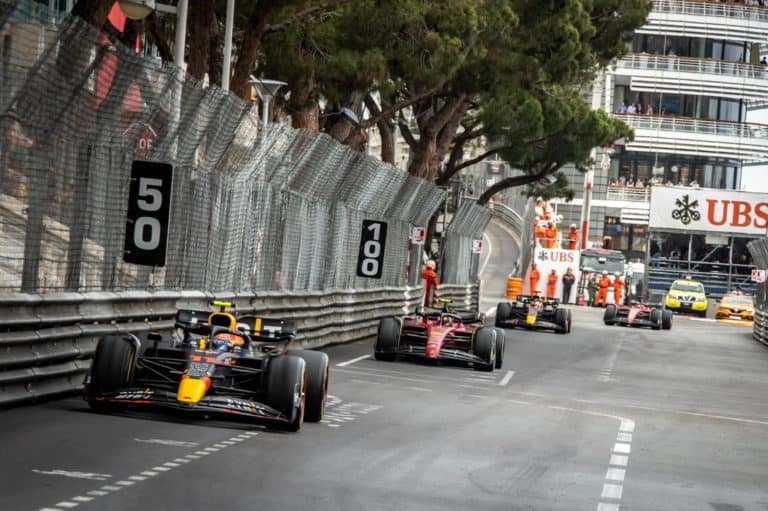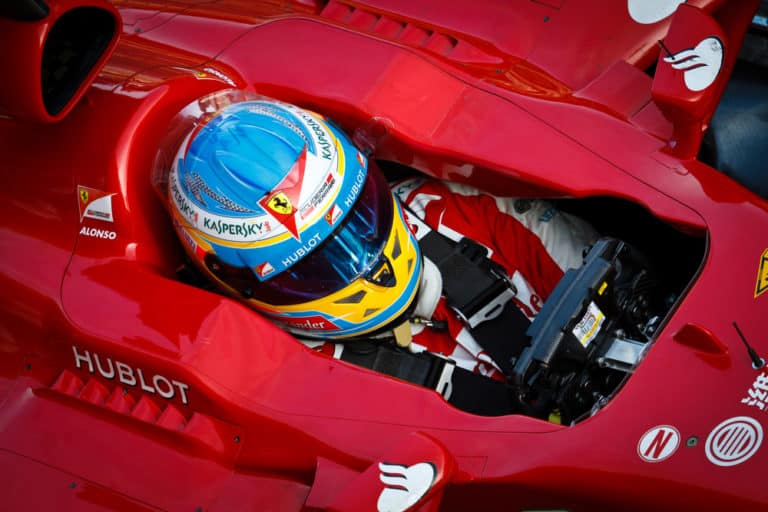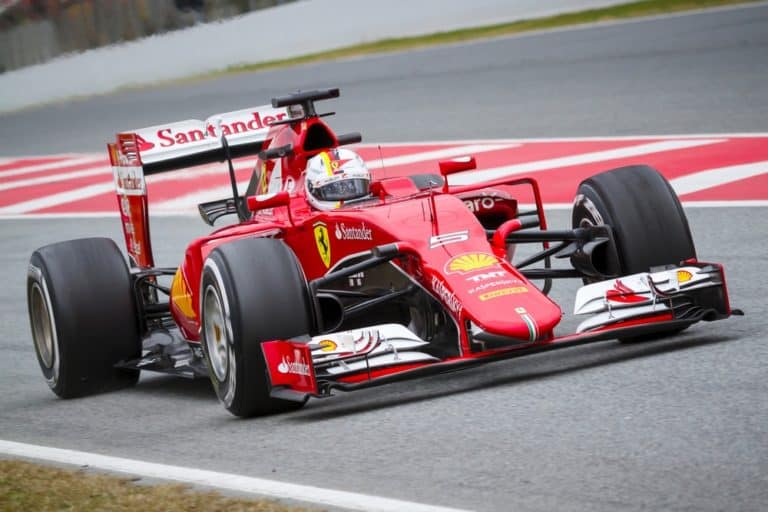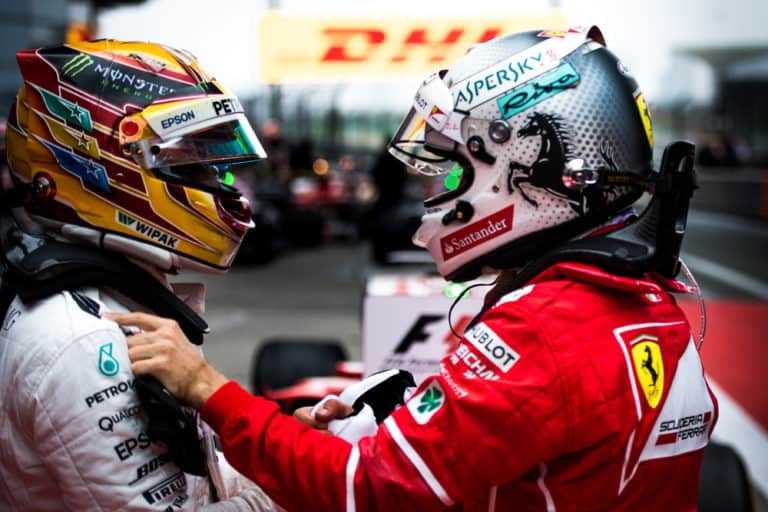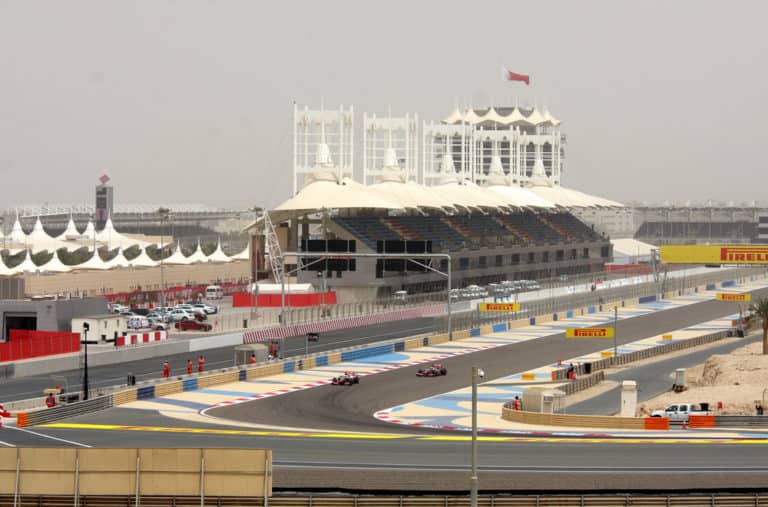The level of detail which goes into formulating the regulations applicable to formula one every year is very detailed. The governing body doesn’t only look at the racing rules, safety protocols, or other more generalized actions but drills down to the smallest detail, which includes the weight of each piston in the engines.
The weight of the 2022 Formula One season car has increased from 749 kgs to 798 kgs. This weight limit caters to the many changes to the formula one cars that came into effect in 2022, particularly with the introduction of 18-inch wheels and the inclusion of substantial safety improvements.
Controlling the weight of a Formula One car is essential to the final results teams achieve on the track. Teams count savings in grams, and considerable effort is spent on reducing the weight of a car over the season; however, this activity has to happen within the minimum weight criteria set by Formula One.
If you’re looking for some F1 merchandise, check out the awesome stuff at the official F1 store here.
An F1 Car Weight Is Strictly Controlled
F1 teams employ some of the best brains in the motor industry, constantly looking at ways to improve the cars and give themselves an advantage over the other teams.
They look at achieving these gains in several different ways, which include.
The Cars Aerodynamic Efficiency
Despite commonly thought, F1 cars are not super slippery regarding aerodynamic efficiency.
In fact, quite the opposite, and with the new 2022 regulations in place and the move to allowing ground effect cars, the teams spend most of their research time looking at how to improve the downforce.
With increased downforce comes more drag, which has a cost in terms of top speed.
The downforce, however, plays a massive effect on the car’s performance in the corners and how fast the drivers can move through twisty circuits.
It is demonstrated by the difference between the 2022 Red Bull Racing RBPT and the 2022 Ferrari. While the Red Bull car has a clear speed advantage, on most tracks, it is Ferrari that could have carried the day. On a separate note, the leaderboard doesn’t reflect this because Ferrari has had embarrassing reliability issues.
The Engine Power
In 2022 the Red Bull Racing RBPT will be the most powerful on the field, and this show on tracks with long fast straights where downforce is not as important as the short and twisty circuits.
The Brakes
Slowing down from very high speeds becomes a racing advantage if the driver can start stopping later than his opponents.
The Cars Weight
The weight of a formula one car is a significant factor in the overall competitiveness of the vehicle.
On a circuit like the Spanish one in Barcelona, it is said that one-kilogram saving will increase the track time by 3/10th of a second.
On a race that takes 55 laps to complete, that equates to
3/10th & 55 circuits equal 16.5 seconds improvement.
Consider that at the end of the recently run Paris grand Prix (Circuit Paul Ricard), the difference between 1st and 3rd position was 16.495 seconds. If the following teams had been able to find 1 kg of weight saving, they would have been first.
What Are The 2022 Weight Regulations
Between the 2021 and 2022 seasons, the allowed weight of the Formula One cars was increased from 749 kg to 798kgs.
The changes were brought about by the rule change, which applies to the 2022 season.
The weight changes result from the following modifications to the 2022 car.
The F1 Cars Floor
From 2022 the cars are allowed to use to generate downforce by creating ground-effect. The floors are aerodynamically designed to create a suction underneath the car, which pulls it towards the road.
These floors have added some weight to the car.
The F1 Cars Wheels
The wheels used by F1 cars have increased from 13 inches to much bigger (and heavier ) 18-inch rims.
The Cars Chassis
The 2022 car chassis have been significantly re-engineered and is designed to protect the driver in more severe crashes.
These changes have increased the car’s weight.
How Are The Weight Regulations Applied
The regulations which F1 teams have to follow are incredibly long and complex and include everything from.
- The car’s aerodynamics
- The tires
- The mechanical components of the engine
- The structure of the driver’s protective cell.
- The cars ride height
- The fuel which is used
Within the major categories, the weight restrictions are drilled down to very small details; for example, the following are regulated within the engine weight categories.
- The car’s weight
- Total Engine weight
- Total weight of the MGU-H
- Total weight of the MGU-K
- The total weight of the whole energy recovery system
- The total weight of the energy storage device (including any clamping
- plates) and electrical connections between cells
- Maximum weight of each piston
- The weight of the driver’s seat.
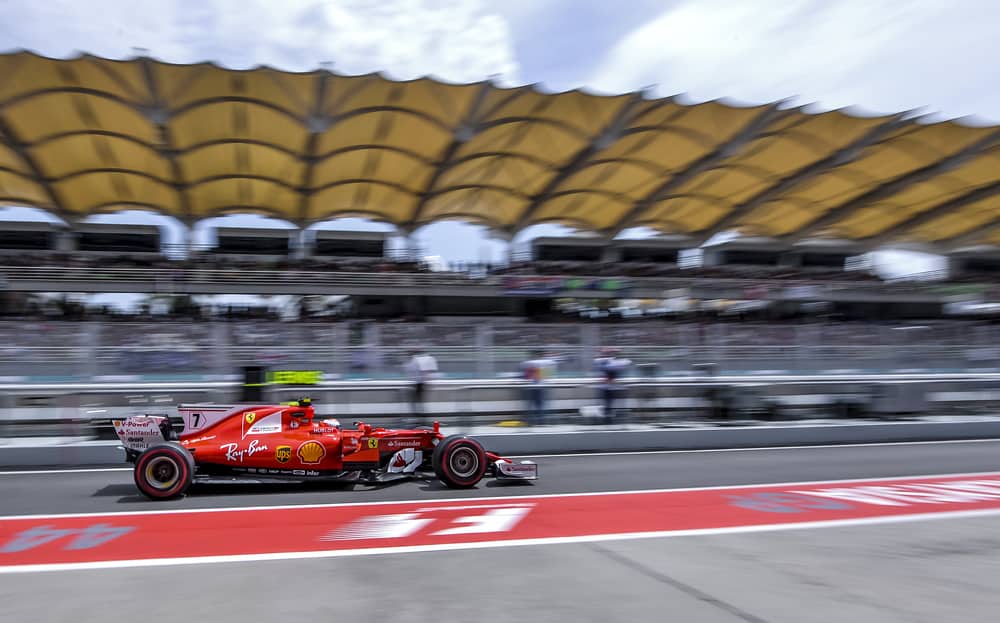
How Do The Regulations Affect The Driver
There are strict weight controls on the driver, which particularly impacts the overall vehicle weight.
The weight limit is the minimum value that each driver can weigh. The reason this is imposed is to prevent the teams from trying to recruit drivers who may weigh less and therefore give them an advantage,
The regulations stipulate that the driver must weigh no less than 80kgs at the end of the race; they can lose between 2kgs and 4kgs during a race, and the weight has to be carefully managed.
The difference in weight between the drivers is extreme, particularly when you consider that the difference between the height of the shortest and tallest drivers are
- Yuki Tsunoda (AlphaTauri) is the shortest driver at 5’2” (1.58m) and weighs 54 kg.
- The two tallest drivers are Alex Albon (Williams) and Esteban Ocon (Alpine) at 6’1” (1.85m) and who weigh 74 kg and 66kg, respectively.
As very few (if any) drivers weigh 80kgs or more, the teams have to compensate by installing ballast in the car to ensure that the difference in driver weight causes no competitive advantage.
The ballast is not allowed to be used strategically by changing the weight and balance ratio of the car and must be installed in the cockpit.
The height, weight, and ballast the relevant teams have to install in the cars to bring them up to weight, are listed below.
| Driver | Team | Height | Weight | Position in 2022 champs | Ballast added |
| Esteban Ocon | Alpine Renault | 1.86 m | 66 kg | 8 | 14 kg |
| Alex Albon | Williams Mercedes | 1.86 m | 74 kg | 19 | 6 kg |
| George Russell | Mercedes | 1.85 m | 70 kg | 5 | 10 kg |
| Nicholas Latifi | Williams Mercedes | 1.85 m | 73 kg | 20 | 7 kg |
| Lance Stroll | Aston Martin Aramco Mercedes | 1.82 m | 70 kg | 18 | 10 kg |
| Max Verstappen | Red Bull Racing RBPT | 1.81 m | 72 kg | 1 | 8 kg |
| Charles Leclerc | Ferrari | 1.80 m | 69 kg | 2 | 11 kg |
| Daniel Ricciardo | McLaren Mercedes | 1.80 m | 66 kg | 12 | 14 kg |
| Carlos Sainz | Ferrari | 1.78 m | 64 kg | 4 | 16 kg |
| Pierre Gasly | AlphaTauri RBPT | 1.77 m | 70 kg | 13 | 10 kg |
| Mick Schumacher | Haas Ferrari | 1.76 m | 67 kg | 15 | 13 kg |
| Kevin Magnussen | Haas Ferrari | 1.76 m | 68 kg | 11 | 12 kg |
| Guanyu Zhou | Alfa Romeo Ferrari | 1.75 m | 63 kg | 17 | 17 kg |
| Sebastian Vettel | Aston Martin Aramco Mercedes | 1.75 m | 62 kg | 14 | 18 kg |
| Lewis Hamilton | Mercedes | 1.74 m | 73 kg | 6 | 7 kg |
| Sergio Perez | Red Bull Racing RBPT | 1.73 m | 63 kg | 3 | 17 kg |
| Valtteri Bottas | Alfa Romeo Ferrari | 1.73 m | 69 kg | 9 | 11 kg |
| Fernando Alonso | Alpine Renault | 1.71m | 68 kg | 10 | 12 kg |
| Lando Norris | McLaren Mercedes | 1.70 m | 68 kg | 7 | 12 kg |
| Yuki Tsunoda | AlphaTauri RBPT | 1.59 m | 54 kg | 16 | 26 kg |
How Much F1 Cars Have Weighed Over The Years
Since the 1960s, when weight limits were first introduced in Formula One, the maximum weight has tracked steadily upwards.
In the 73 years in the interim, the F1 cars permitted weight has almost doubled from 450kg to 798 kg.
The changes have generally been made as a result of the following factors.
- Engine technology changes.
- Safety changes.
- Performance changes to improve the racing capacity of the cars.
| Year | Weight | What influenced the weight change |
| 1950 – 1960 | No Weight Limit | 1. Not applicable. |
| 1961 – 1965 | 450 kg | 1. First weight limit. |
| 1966 – 1969 | 500 Kg | 1. First-time mid-engine car in series. |
| 1970 | 530 kg | 1. Addition of the ‘double four valve’ three-liter v8 engine. |
| 1972 | 550 kg | 1. Safety foam added to fuel tanks, 2. The magnesium sheeting had to be more than 3 mm thick, 15w, 3. Red rear light mandatory, 4. Headrest required, 5. Minimum cockpit dimensions, 6. Combined electrical cut off 7. Extinguisher external handle required, 8. Fuel tanks to meet FIA specifications. |
| 1973 – 1981 | 575 kg | 1. Safety bladder fuel cell tanks were introduced, 2. The crushable structure around fuel tanks became mandatory, 3. No chrome plating of suspension parts allowed. |
| 1982 | 580 kg | 1. Rigid skirts were legalized, and ride height restrictions were removed. |
| 1983 – 1986 | 540 kg | 1. Outlawing of ground effect cars return to a flat undertray, 2. Four-wheel drive banned. |
| 1987 – 1990 | 500 kg | 1. Survival cell, 2. Fuel cell mandatory. |
| 1991 – 1993 | 505 kg | 1. Changed survival cells, 2. Seat belts, 3. Fuel tanks, 4. Rollbar. |
| 1994 | 515 kg | 1. The distance of front end plates to the flat bottom increased from 25 to 40 mm (0.98 to 1.57 in), 2. Headrest risen from 80 to 400 cm2 (12 to 62 in2). |
| 1995 | 495 kg | 1. The engine capacity was reduced from 3,500 to 3,000 cc, 2. Inch safety straps are mandatory, 3. The height of the front wing was increased, 4. Longer and higher cockpit openings. |
| 1996 – 2002 | 600 kg | 1. The cars were required to carry FIA ADR (accident data recorder), 2. The Rear and the lateral headrest were made as a one-piece unit, 3. Wheel tethers were added, 4. V10 engines, which displaced 3000cc, were added, 5. Traction control, 6. Beryllium alloys in chassis or engine construction were banned, 7. The entry space in the cockpit increased, and the driver survival cell concept was introduced, 8. The rear wings were changed to include no more than 3 elements. |
| 2003 – 2008 | 605 kg | 1. HANS (Head And Neck Support) system is a mandatory, 2. The rear overhang increased from 50 cm (20 in) to 60 cm (24 in), 3. Rear diffuser size reduced, 4. The engine capacity was restricted to 2400 cc, and a V8 engine was introduced to reduce horsepower, 5. The use of non-ferrous materials in the engine’s construction was restricted, 6. The Rear wing structure was strengthened to prevent flexing, 7. Increased strength is required from the rear crash structure. |
| 2009 | 605 kg | 1. Every aerodynamic device was banned except the front and rear wing, 2. Variable front aerodynamic devices are permitted, 3. Introduction of KERS (kinetic energy recovery system). |
| 2010 | 620 kg | 1. The front tire width was reduced from 270 mm (11 in) to 245 mm (9.6 in), 2. KERS was withdrawn for the 2010 season. |
| 2011-2012 | 640 kg | 1. Re-introduction of KERS. |
| 2013 | 642 kg | 1. “Modesty panels” were introduced to compensate for the previous year’s front nose reprofiling. |
| 2014 | 690 kg | 1. New Engines And Heavy And Complex ERS system, 2. KERS (now known as ERS-K) was introduced. |
| 2015-2016 | 702 kg | 1. Nose redesign. |
| 2017 | 728 kg | 1. The width of the car width increased to 2000 mm, 2. The front tire width increased from 245 mm to 305 mm, 3. The rear tire width increased from 325 mm to 405 mm, 4. Shark fins are brought back, 5. T-wings were introduced through a loophole, 6. Barge board sizes also increased. |
| 2018 | 733 kg | 1. Shark fins banned, 2. T-Wings have been banned, 3. Halo cockpit protection device becomes mandatory. |
| 2019 | 740 kg | 1. The front wing was simplified, 2. The rear wing was required to become 100 mm (3.9 in) wider, 3. The total gas capacity was increased from 105 kg (231 lb) to 110 kg (240 lb), 4. The car’s weight no longer includes the driver’s weight. |
| 2020 | 746 kg | 1. The end 50 mm (2.0 in) of the car’s front wings were banned from containing any metals. |
| 2021 | 749 kg | N/A |
| 2022 | 798 kg | 1. Bigger Wheels, 2. Total Engine weight increased, 3. Total weight of the MGU-H, 4. Total weight of the MGU-K, 5. The total weight of the whole energy recovery system, 6. Front Wing, 7. Safety equipment increased. |
Conclusion
The Formula One teams have very little “wriggle room” when it comes down to looking for a way to achieve lower car weights or any other performance enhancement designed to give them a competitive edge.
Tolerances and changes are measured in micro units and the advantages in 100th of seconds; however, as the difference in qualifying times is sometimes a 100th of a second, every gain they can achieve works in their favor.

